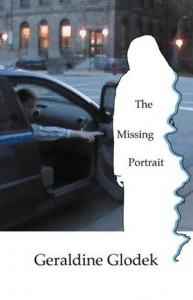
Mary Frances’ mother, Joyce, is obsessed with denying her daughter’s pregnancy, to the point of explaining that Mary Frances is missing one high school photo because she was recuperating from a broken leg in Vermont. The whole town, Mount of Olives, knows different.
Mary Frances gave birth in a ‘home’ in New England and, without seeing the child, gives the baby up for adoption. But she does not forget, and twenty-five years later, she retires from the Navy and wants to know more. Mom is no more forthcoming now than then. She won’t even name the town where the baby was born.
One of the four gang-bangers is on a business trip in Maine and sees Sharon. He invites the other three and another self-centered friend to join him later and take a look at her themselves. They all believe that Sharon — an overweight, bed-wetting, woman who usually lives in a transition home for women in her Maine town — does resemble Mary Frances.
The five former coal-town high school mates come across largely as crude men you want your daughters protected from and hope even your sons never meet. They brag about their petty lives and sexual ‘conquests’ and deride one another. Only one seems to regret his actions of long ago, but a reader senses this is more because he would rather not deal with the guilt.
Unknown to four of the men, the fifth one poses as a lawyer hired to find Sharon and introduce her to her birth mother. He is a convincing liar.
While the book’s first human character is Mary Frances, relatively little of the book features her. Sharon and the liar-cum-lawyer (Tim Giovanni) are presented the most, but there are many characters and many points of view. Several family histories are described in great detail.
The story has a couple of good twists, and Glodek describes every setting well and relates it to her characters. However, there is a lot that distracts from what appears to be the main story. A reader can come to care what happens to Sharon or whether Mary Frances ever meets her child, but much of the detail on the five high school friends and their lives (and other characters) is simply information.
Characters explain their thoughts in great detail, even when talking to people who know them well. A number of scenes come across as material the author wants a reader to know rather than revelations that move the story or a character forward.
The most compelling aspect of the book is its description of Sharon’s life and feelings. Glodek portrays the life of a woman on the raw end of life in a very convincing fashion.
If you are looking for a book about piggish men and one conniving woman whose actions have consequences over decades, then The Missing Portrait is for you. I give it three stars, because the plot twist is very good.
Links
Get an Editorial Review | Get Amazon Sales & Reviews | Get Edited | Get Beta Readers | Enter the SPR Book Awards | Other Marketing Services






















Interesting. I will also like to read The Missing Portrait
Ms. Orr’s review prompted me to get “The Missing Portrait” on my B&N nook. As a social worker, I was struck by the two social workers who cross paths with the scheming Tim. Like the retired social worker, Claire, I was distressed by Michele, who spouts chapter and verse of the latest textbooks with fundamentalist zeal while denouncing Claire’s accurate, but unwelcome, insights as old school and irrelevant. Both women belong to the same Quaker church in Maine, and Michele has a notable ministry to “unfortunate people” beyond its doors.
Enter Sharon, a homeless woman, who shows up one Sunday at the invitation of Tim, a wealthy tourist who followed her through the slippery streets the day before and mooched his way into the same group of silent Quaker peace demonstrators Sharon had joined in with to get warm. His scheme is to spite Mary Frances, a “lowlife” from his high school days who got pregnant, gave her baby up, and is now hoping to find her child. Matching her up with this wretch is Tim’s idea of a joke. At the church, Sharon, dressed in shabby clothes and scuffed boots, stammers that she came because a nice Quaker man there was going to connect her with her birth mother in Pennsylvania.
Michele offers Sharon comforting hugs and offers Tim help with travel arrangements. Claire, who had been observing Tim, senses something fishy. But Michele, speaking in tongues of current psychobabble, dismisses Claire as having “unfinished business” and assesses Sharon as someone who “has issues” and needs help. So, to Tim’s delight, Michele has stepped right in it. He can count on her to keep Sharon faithful to his scheme after he leaves town.
The mystery of whether Mary Frances ever finds her baby is a catalyst that sets in motion a larger story of how families in search of the American Dream fared over three generations. Immigrants who broke their backs in factories and mines to provide better futures for their kids and grandkids, never meant for them to forget where they came from and look down their noses at families who still work with their hands. But Tim and his well-off buddies cruise the streets to pick up girls like Mary Frances, who should jump at a chance to get laid in an expensive car.
I wouldn’t reduce this book to a story about five piggish men and the selfish mother of a teen who got pregnant. Two of the men sincerely regret those days. In fact Bruce, a huge former football player, is conned by Tim into thinking this huge Sharon, conceived in a gang-bang, is his daughter, and he does everything he can to make up for the years he could have provided for her. This well-written book is a vast sociological portrait.